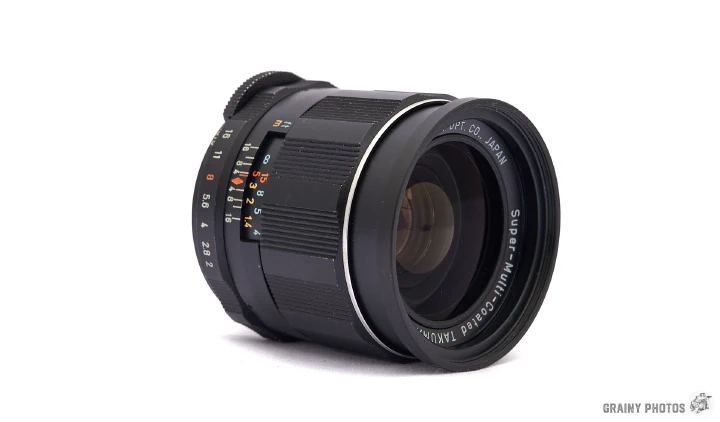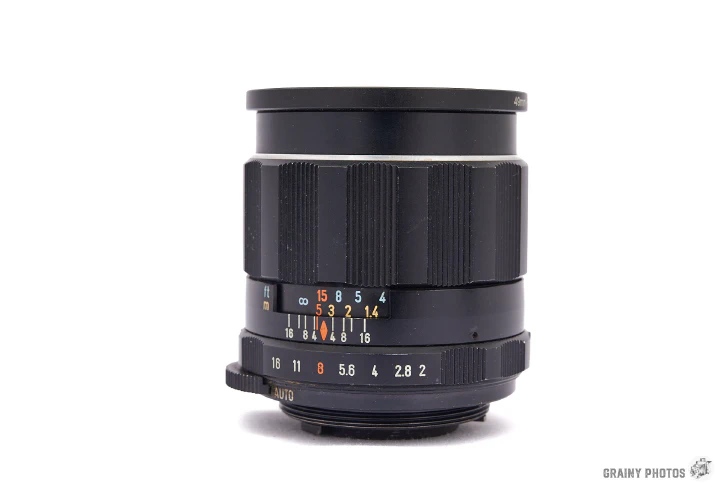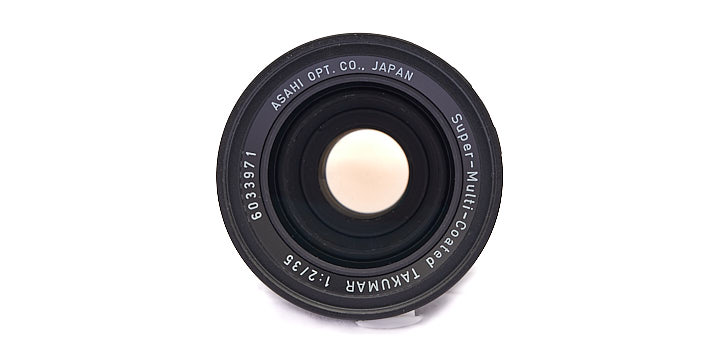The Super-Takumar 35mm f/2 lens is well-regarded by vintage lens enthusiasts and photographers who appreciate its optical performance, build quality and character.
Brief history
The Super-Takumar 35mm f/2 lens is generally regarded as very good, especially considering its vintage. Produced by Asahi Optical Company (later known as Pentax) in the 1960s and 1970s, the Super-Takumar series of lenses was known for its excellent optical quality and solid construction.
Two models were made over time with different optics. The first has a 67 mm filter size, and the second is 49 mm. Each model came in two versions, with no change in optics between the versions. The following information is for the lens I used: the latest model and version.

Characteristics of the Super-Takumar 35mm f/2
- Optical Performance: The lens is known for its sharpness, even when used at wider apertures such as f/2. It produces images with good contrast and colour rendition.
- Build Quality: Like many vintage lenses from that era, the Super-Takumar lenses are built to last. They typically feature metal construction and buttery smooth focusing rings, giving them a solid and durable feel.
- Bokeh: The lens can produce pleasing background blur (bokeh) when used at wider apertures, making it suitable for capturing subjects with a shallow depth of field.
- Compact Size: The Super-Takumar 35mm f/2 lens is relatively compact, making it a good option for travel photography or everyday use.
Manual focus medium wide-angle prime lens.
- Lens mount: M42
- Lens optics: 8 elements, 7 groups
- Aperture blades: 6
- Max./Min. aperture: f2/f16
- Minimum focus distance: 0.4 m
- Filter size: 49 mm
- Size: 61 x 54 mm
- Weight: 240 g

Radioactive coating
Some Super-Takumar 35mm f/2 lens versions were manufactured with a thorium-based radioactive lens coating (mine is). The thorium oxide coating was applied to some lenses during the mid-20th century to improve optical performance and reduce lens flare. This is one of my favourite lenses, and it could be that the thorium coating does make a difference.
The radioactive nature of thorium oxide can cause the lens elements to gradually turn yellow or brown over time, affecting the lens’s colour rendition. My lens has definitely yellowed and has a noticeable reduced light transmission of about half a stop. I only use this lens for black-and-white photography, so any effects on the colour rendition are not a problem. In fact, I am convinced that the yellow discolouration acts as a yellow filter and increases contrast slightly.
There have been concerns about potential health risks associated with prolonged exposure to radiation emitted by these lenses, although the levels of radiation emitted are very low and not considered harmful with normal use.
If you’re considering purchasing a vintage Super-Takumar lens or already own one, it’s advisable to handle it with care and be aware of any potential risks associated with radioactive lens coatings. Additionally, if you’re concerned about the yellowing of the lens elements affecting image quality, there are methods available for restoring clarity to affected lenses; typically, this involves exposing the optics to UV light.
Conclusion
This mid-range telephoto lens is a great value for money. Its build quality is amazing, and its buttery smooth focusing ring makes it a joy to use. It’s my lens of choice for general walk-about with the Pentax Spotmatic.
